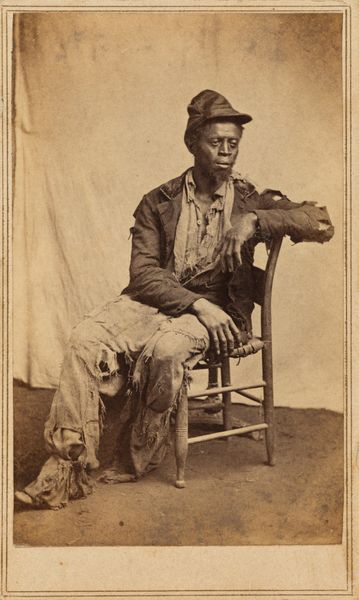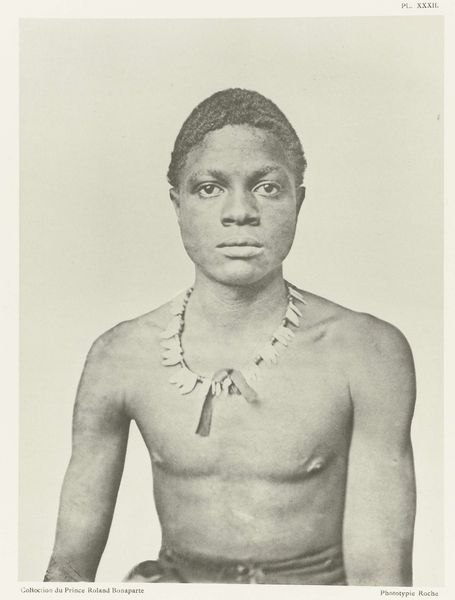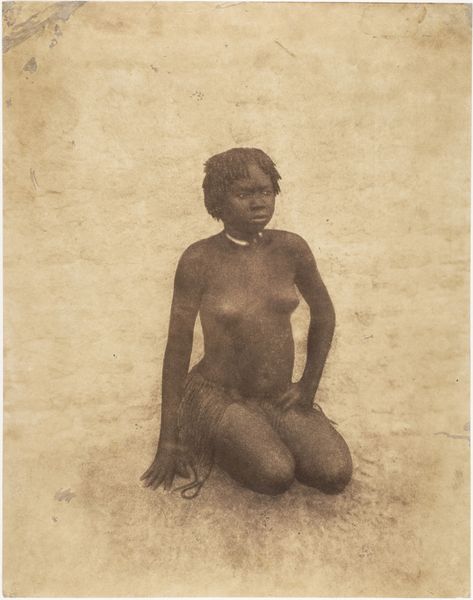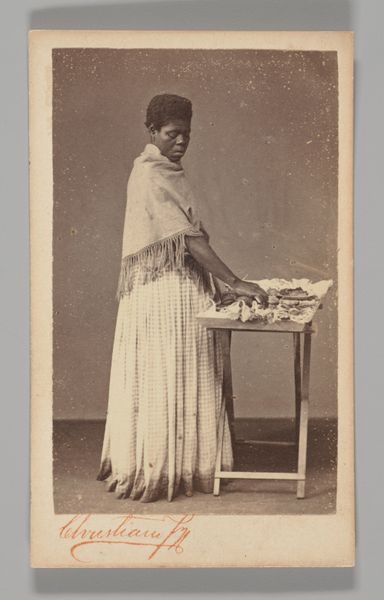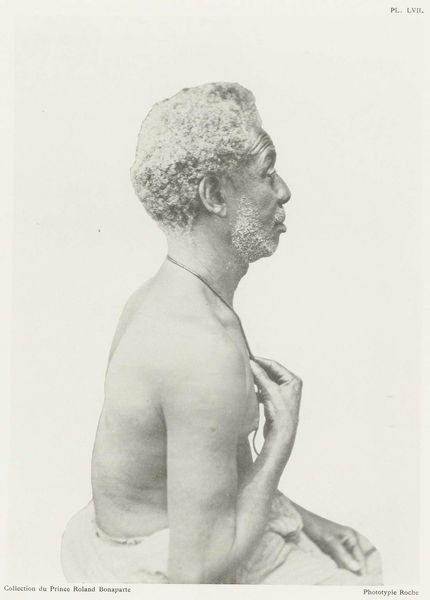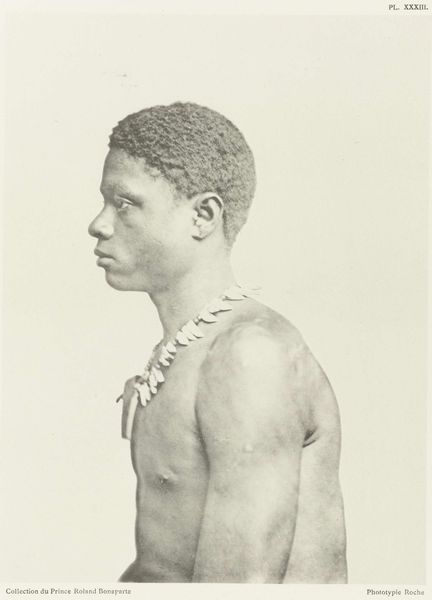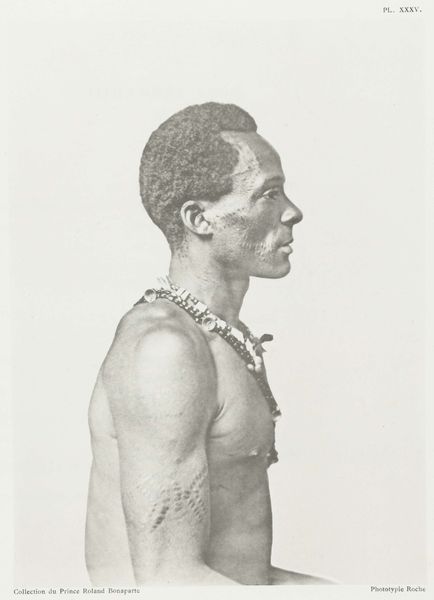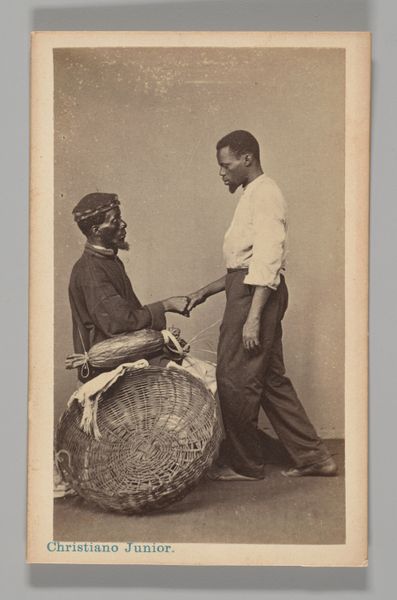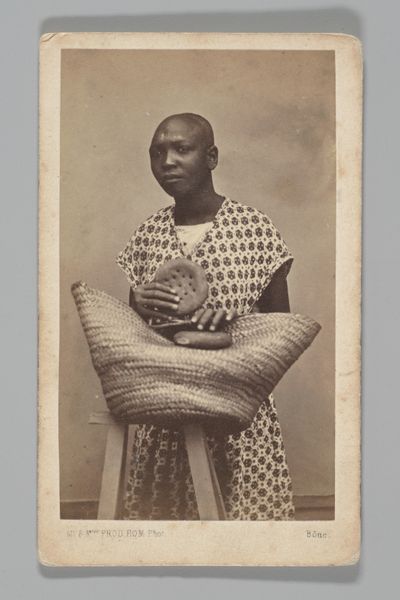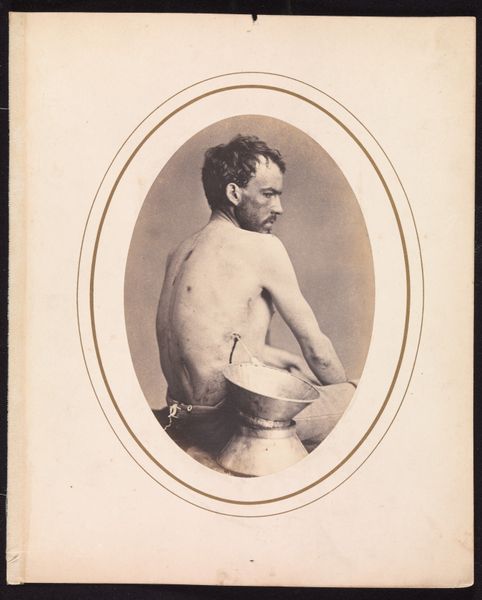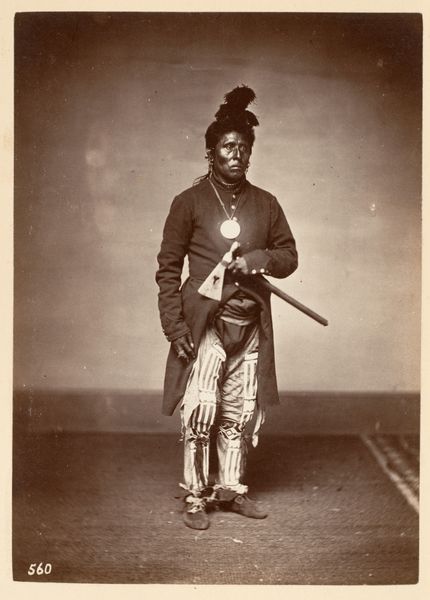
Dimensions: image/sheet: 8.6 × 5.6 cm (3 3/8 × 2 3/16 in.) mount: 10 × 6.4 cm (3 15/16 × 2 1/2 in.)
Copyright: National Gallery of Art: CC0 1.0
Editor: We’re looking at "The Scourged Back," a photograph dating back to around 1863 by McPherson & Oliver. The contrast is stark and unsettling. What strikes you when you look at this? Curator: Immediately, the distribution of light and shadow commands attention. The photograph's tonality creates a visceral experience. Note how the texture is rendered. How might you describe the photographer’s treatment of the scars in terms of line and form? Editor: They are raised and grotesque, aren’t they? Is it typical of this era? Curator: Precisely. Observe the subject's averted gaze. This is in direct tension with the prominent display of his back. Why do you think the artist chose to direct the viewer's focus so specifically? Editor: Is the artist creating a narrative with that particular choice? Perhaps it draws attention to the systematic nature of the violence, turning the body into a landscape marked by brutality? Curator: Yes, this approach transforms the human body into a site of inscription. The photographer forces a reading of the subject not as an individual, but as a representation marked by specific, identifiable injuries, that suggests an allegorical tale. Editor: This photo moves past just social commentary and enters a space where the visual language evokes the realities of that history. Curator: Precisely. It allows us to dissect the ways an image, even one seemingly straightforward, functions as a layered text conveying messages.
Comments
No comments
Be the first to comment and join the conversation on the ultimate creative platform.
